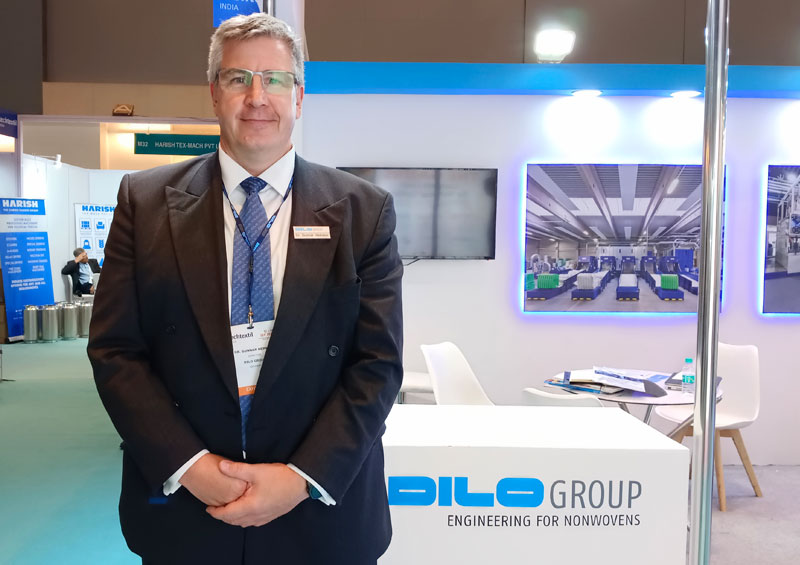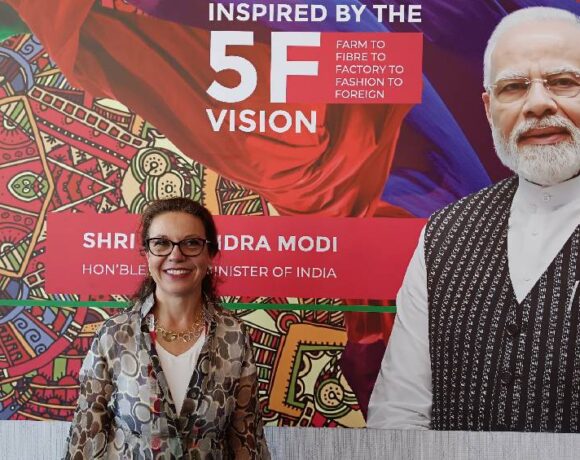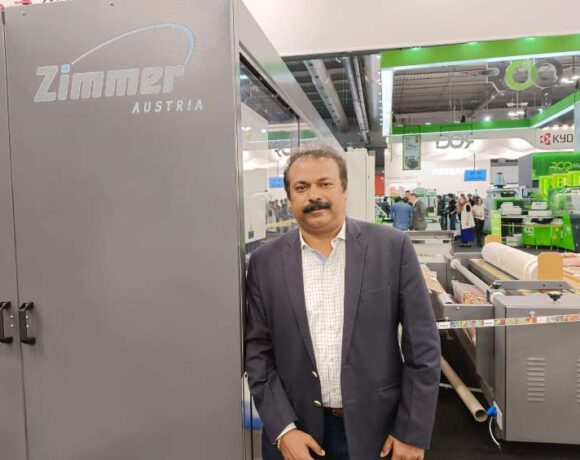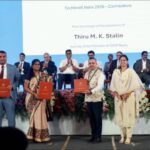MicroPunch Technology Will Play A Pivotal Role In Textile Industry’s Sustainability Efforts

The emergence of MicroPunch technology promises substantial energy savings and reduced consumption of resources like gas and water, says Dr. Gunnar Hemmer, Marketing & Sales Director, Dilo Systems GmbH in an interview with Henry Dsouza of Textile Insights
Could you elaborate on the key benefits of MicroPunch technology and its role in promoting sustainability within the textile industry?
MicroPunch technology represents a significant advancement in needling technology. It offers several key advantages for the textile industry. One of the primary benefits is its remarkable energy efficiency, resulting in reduced power consumption. Importantly, it also minimizes the need for resources like water, gas and chemicals. Additionally, MicroPunch technology requires less space, making it a space-saving solution.
In terms of sustainability, the advantages are noteworthy. The technology significantly reduces the carbon footprint, aligning it with environment-friendly practices. It’s essential to recognize that MicroPunch technology is poised to play a pivotal role in the industry’s sustainability efforts for the next few decades.
Furthermore, MicroPunch technology enables the production of certain products that previously required hydro-entangling through needling alone. While it’s not intended to replace hydro-entangling entirely, it offers a sustainable alternative for specific products. This innovation allows manufacturers to be cost-effective and environmentally responsible simultaneously.
The potential for MicroPunch technology is vast, with applications and benefits that extend globally into the foreseeable future.
What is your perspective on the future of sustainability and innovative technologies within the technical textile industry?
Looking ahead, sustainability and innovative technologies are set to reshape the landscape of the technical textile industry in several significant ways. One of the pivotal developments is the emergence of MicroPunch technology, which promises substantial energy savings and reduced consumption of resources like gas and water. This trend aligns with the growing global emphasis on resource conservation and sustainability.
Furthermore, our new RecycloLine represents a notable stride towards enhanced sustainability. This innovative approach enables the recycling of various materials, such as carpets from flooring and exhibitions. These materials can be collected, processed and transformed into new nonwovens, contributing to a circular economy.
In addition to these advancements, we are actively engaged in collaborations with Italian partner and this partnership holds the potential to yield high-value solutions in terms of sustainability. The collective efforts of industry leaders and innovators like us underscore a commitment to driving sustainability and innovation hand-in-hand in the technical textile sector’s future.
Can you provide some insights into your new products, MicroPunch and Recycloline?
Certainly, these two products, MicroPunch and Recycloline, are innovations that we introduced for the first time at ITMA in Milan this year. The Micropunch technology is in an early but already in market stage, where we are currently conducting in-house trials with customers to further develop their products. The RecycloLine technology consists of proven, market available solutions from Dilo, Dell’Orco and Technoplants. We are convinced that both technologies hold an immense promise for the near future. It’s inevitable that they will become integral to our product line, and we are excited about the opportunities they bring to the textile industry.
How was your experience at the Techtextil India 2023 exhibition?
I’m delighted with our experience at the Techtextil India 2023 exhibition. India is a highly promising market, and during the event, we engaged in fruitful discussions with our customers. The exhibition venue itself was fantastic, with excellent organization and significant improvements compared to previous Techtextil India events.
The response from attendees was positive, even though the exhibition was not exceptionally large. We had a consistent flow of visitors throughout the day. Overall, I’m very pleased with our participation in the exhibition and grateful for the opportunity.














